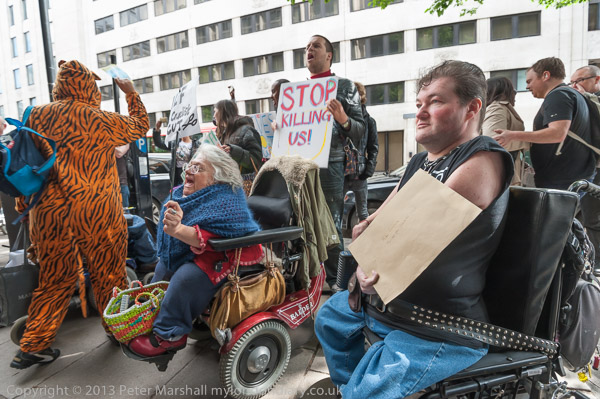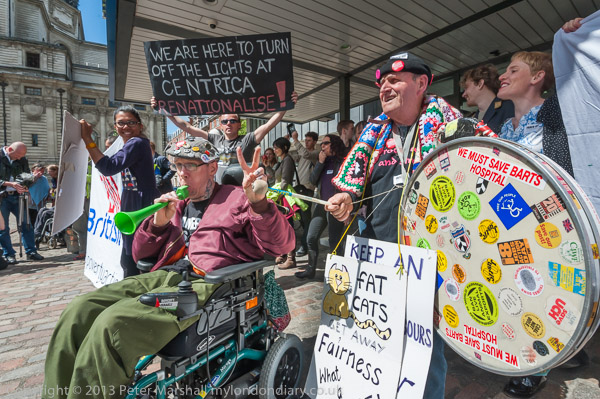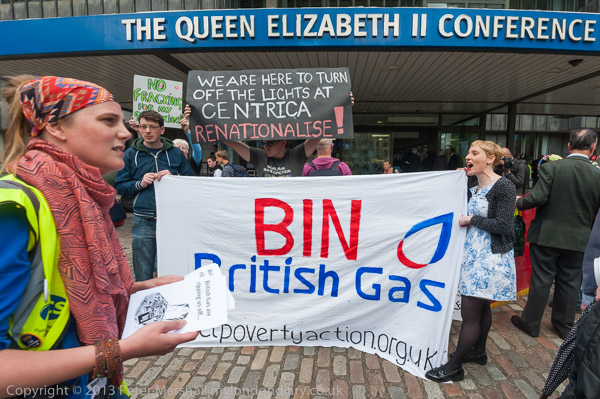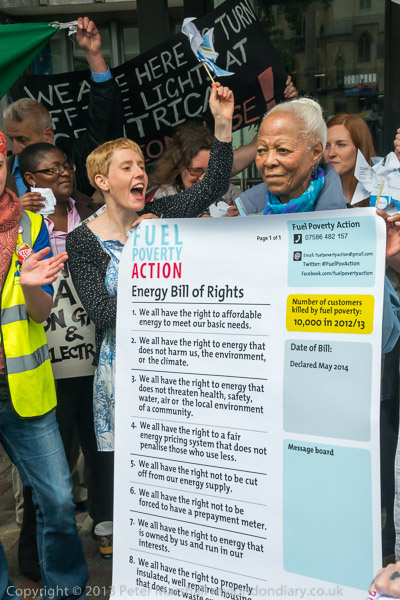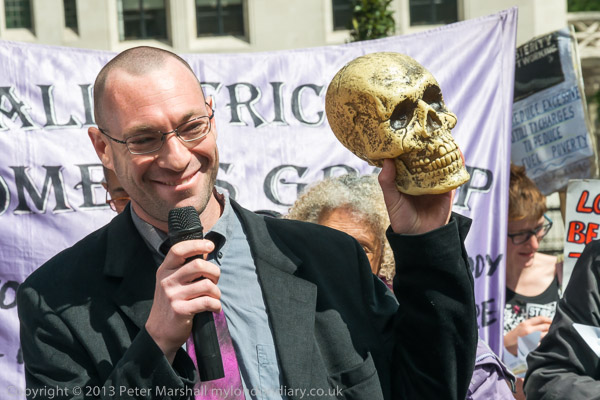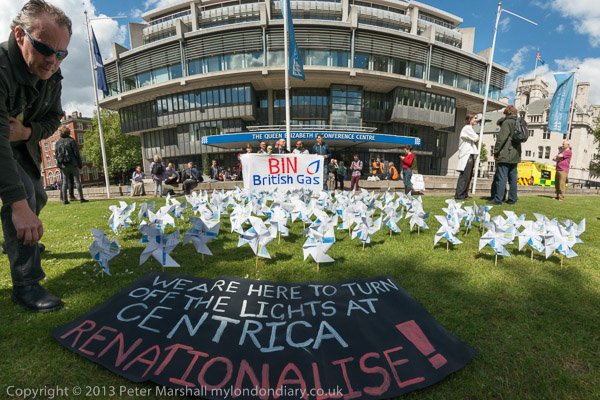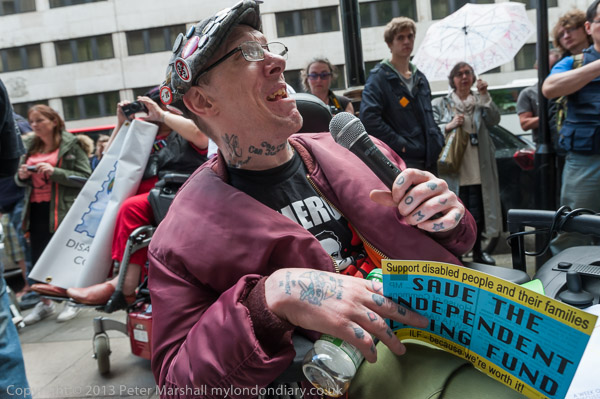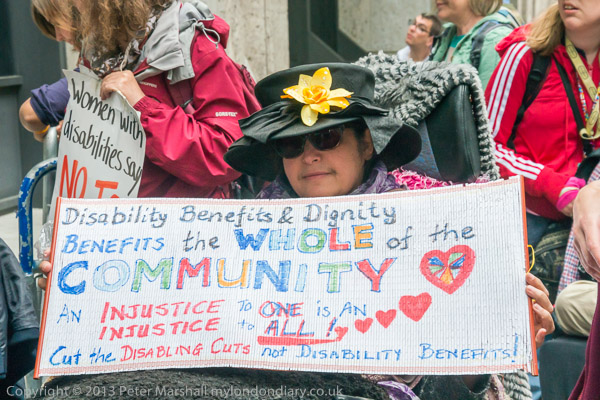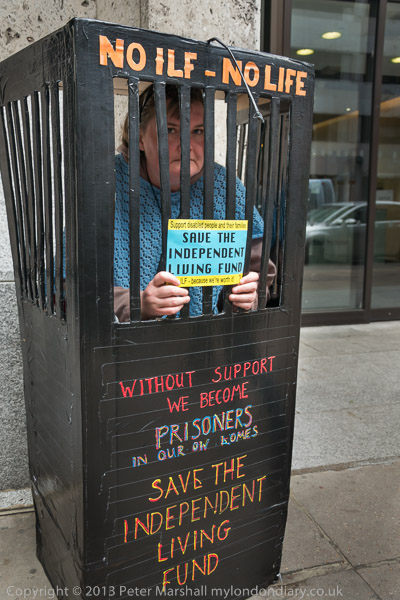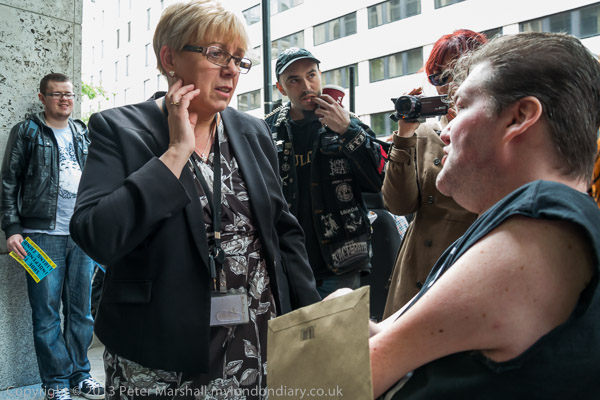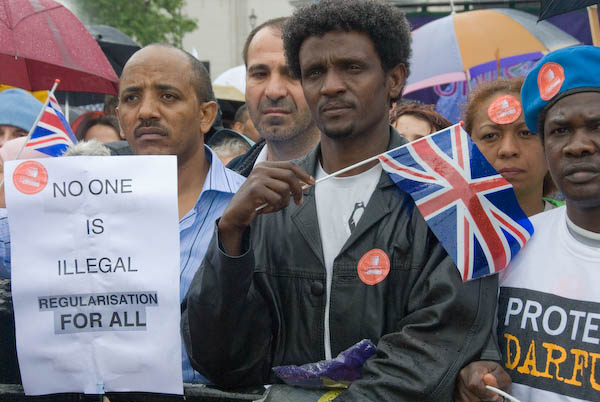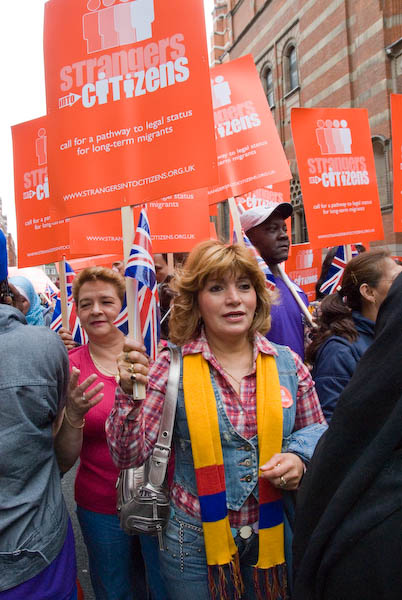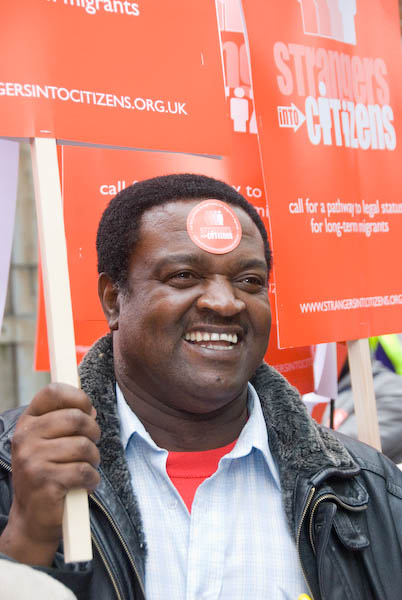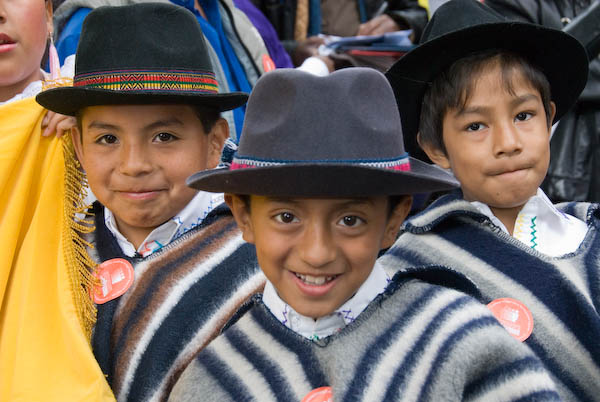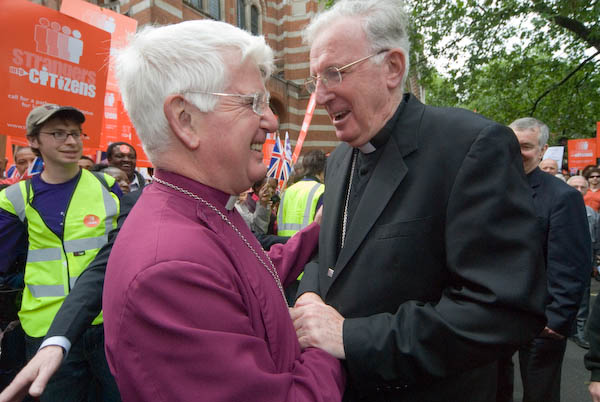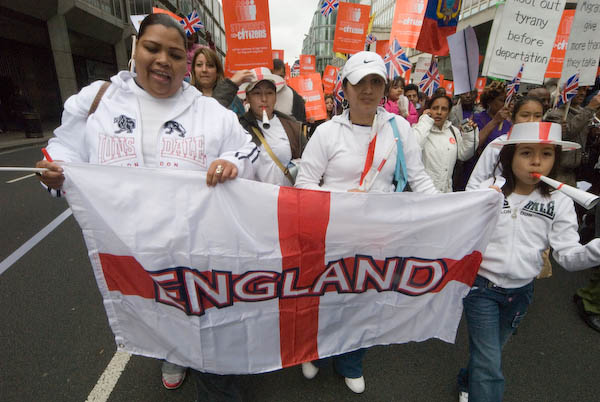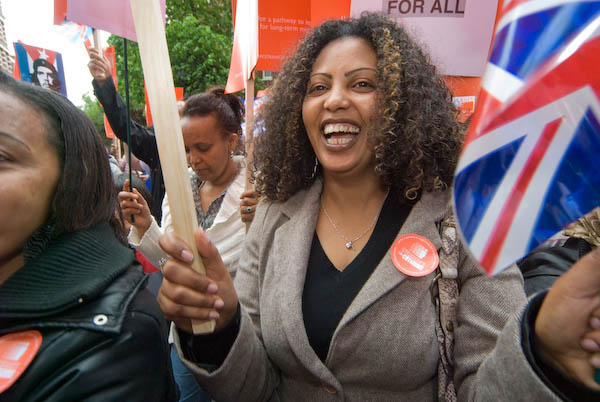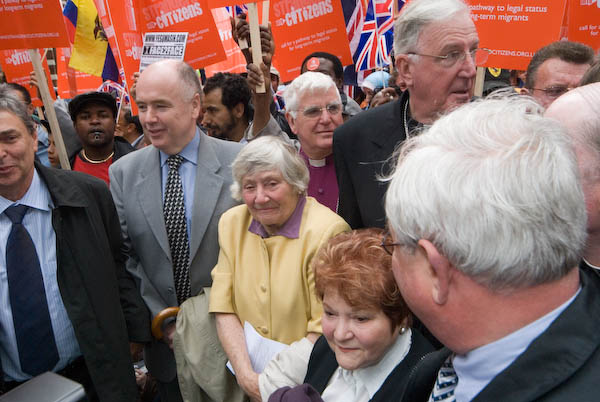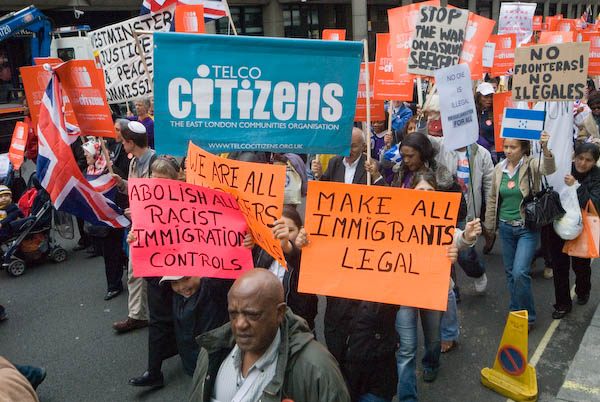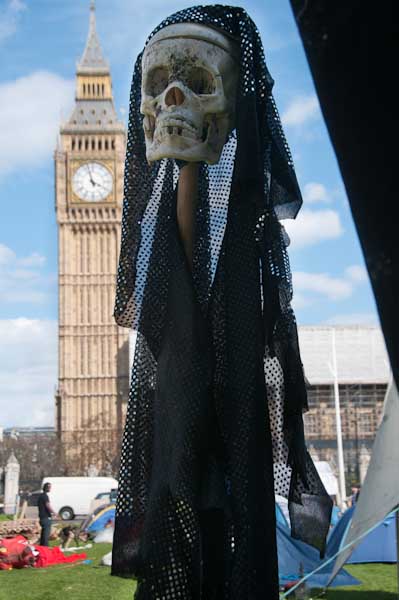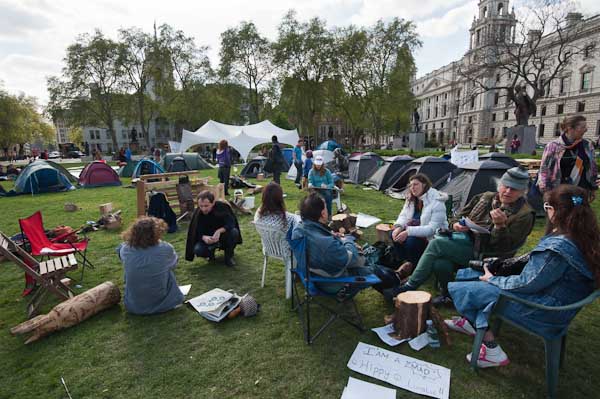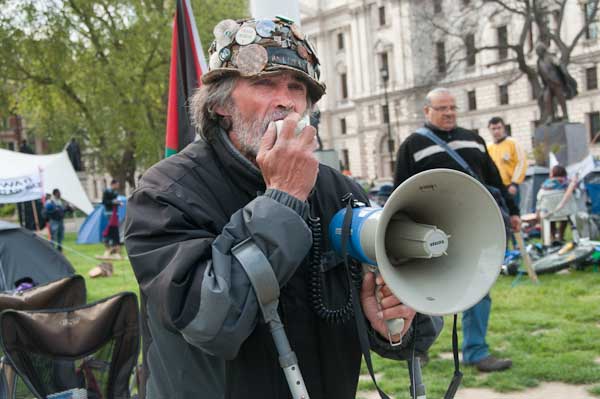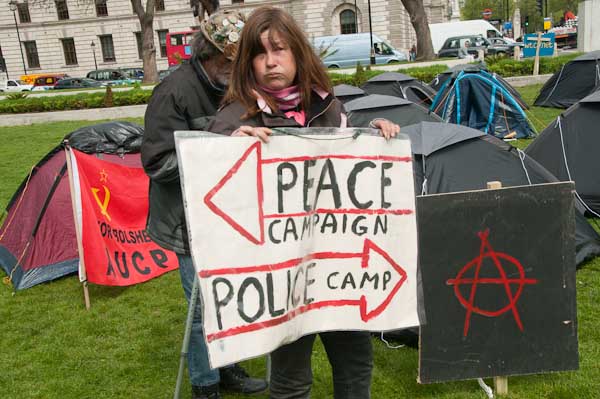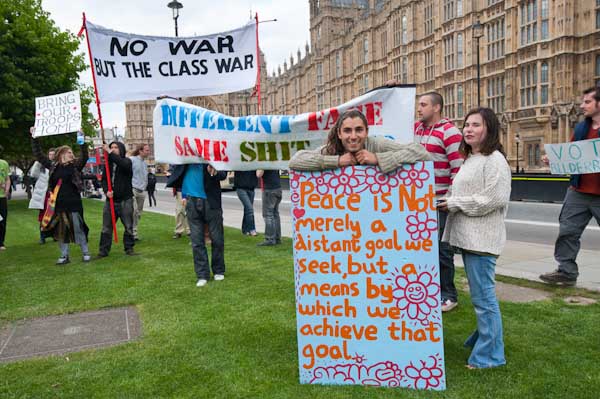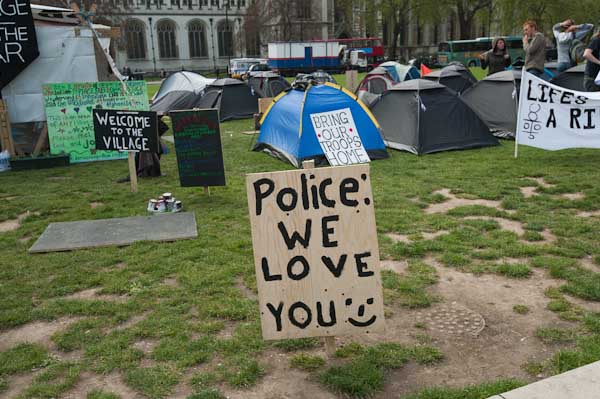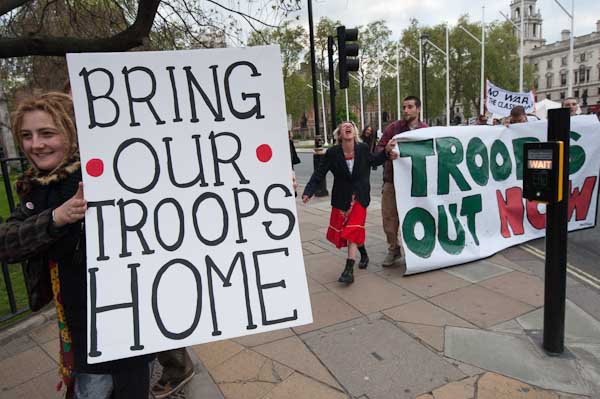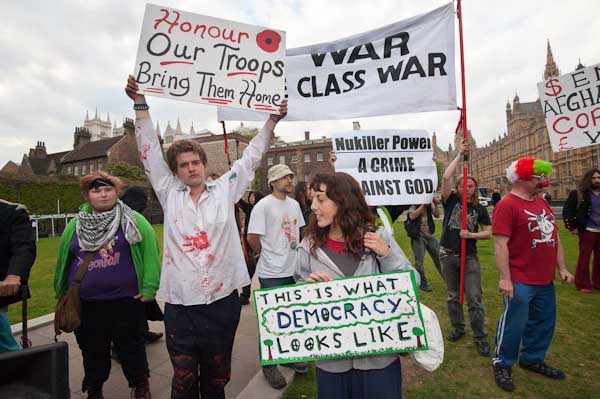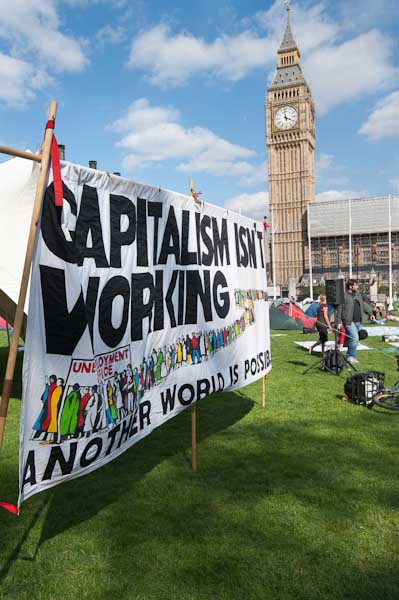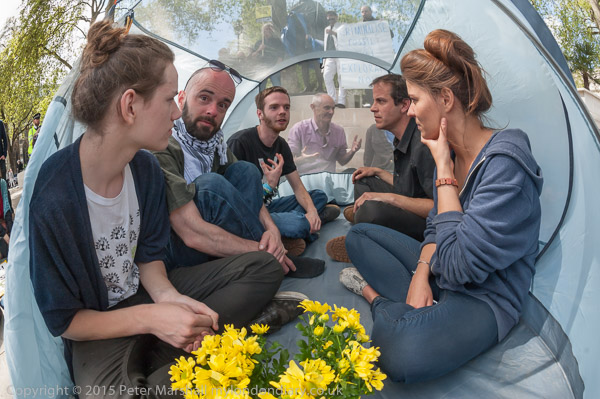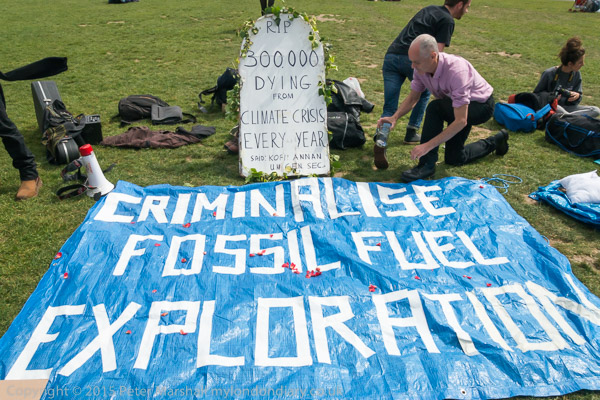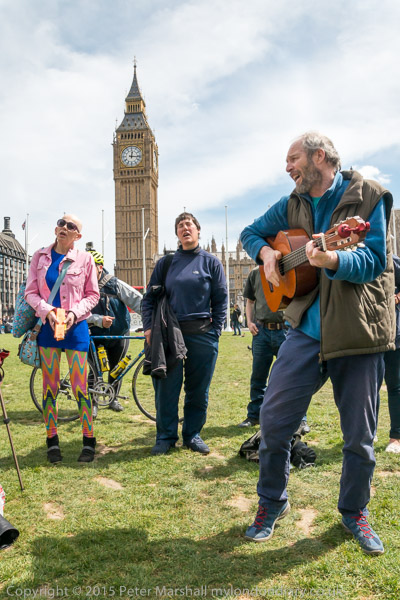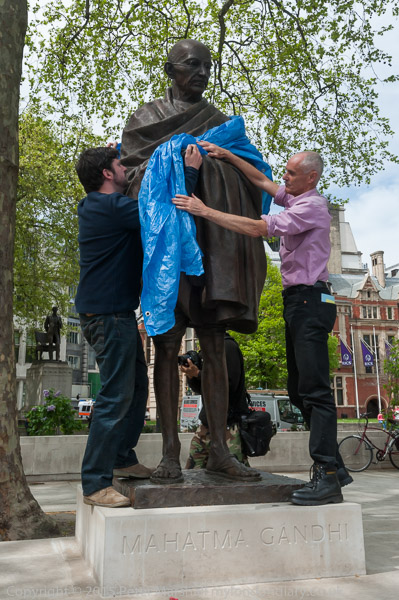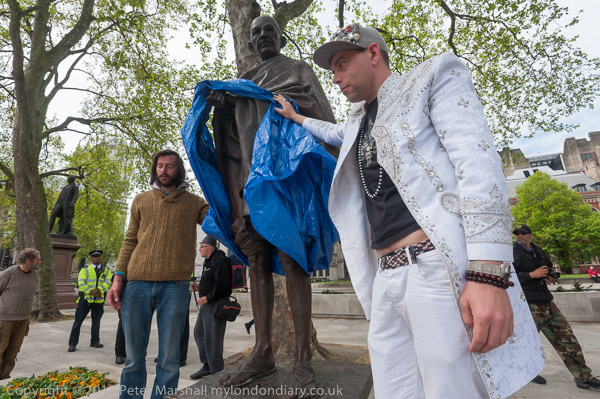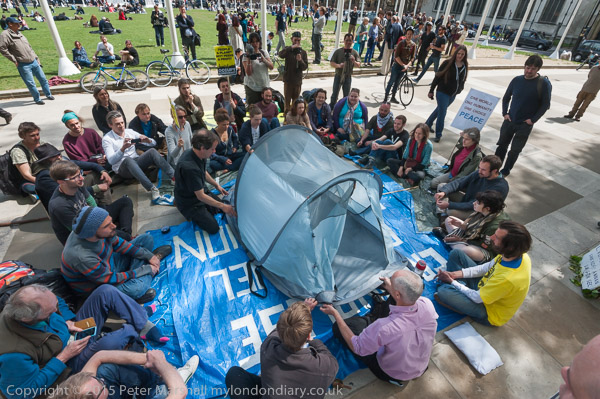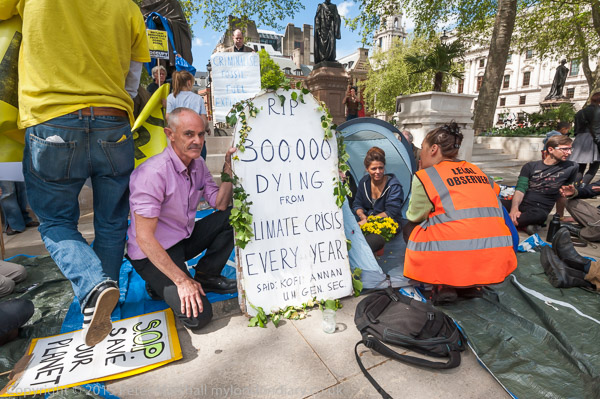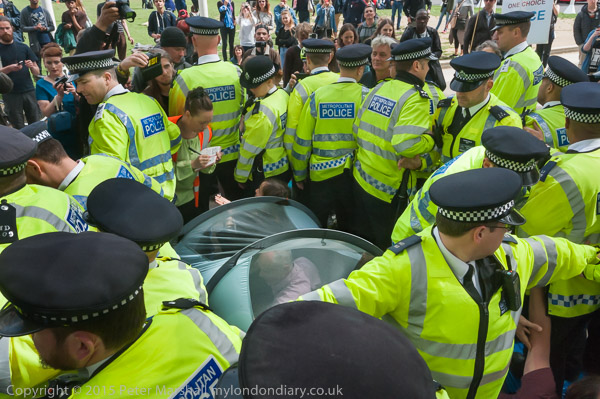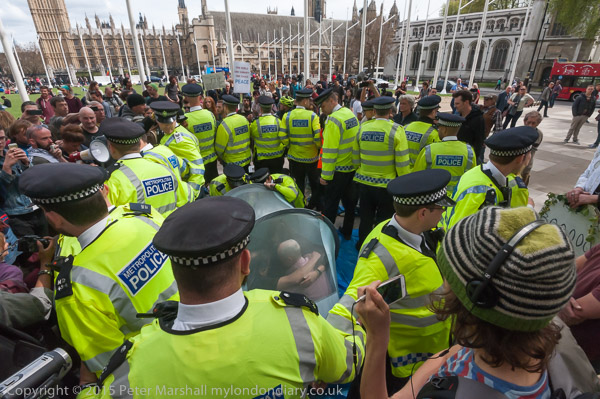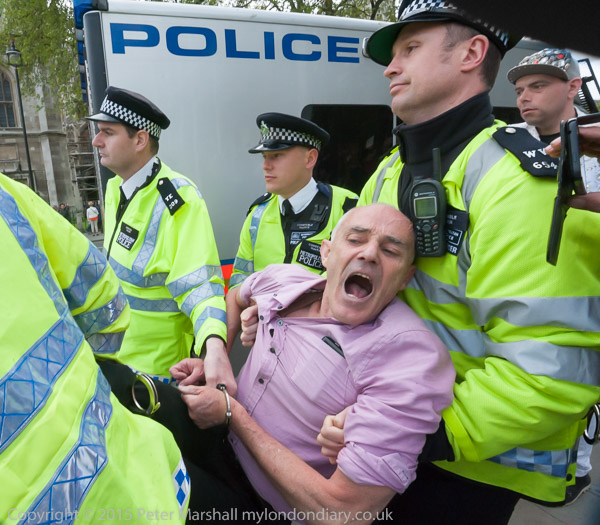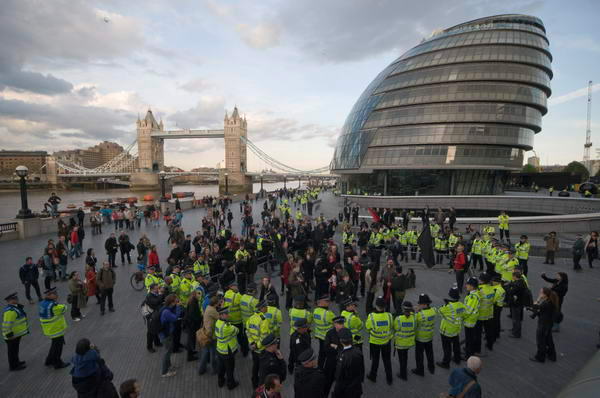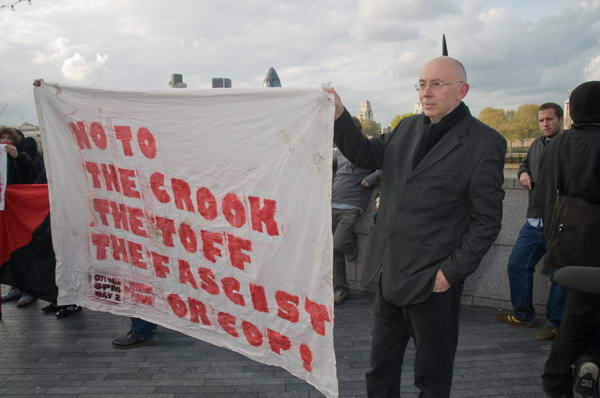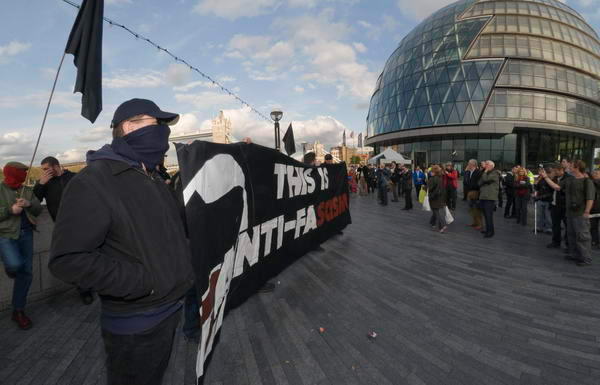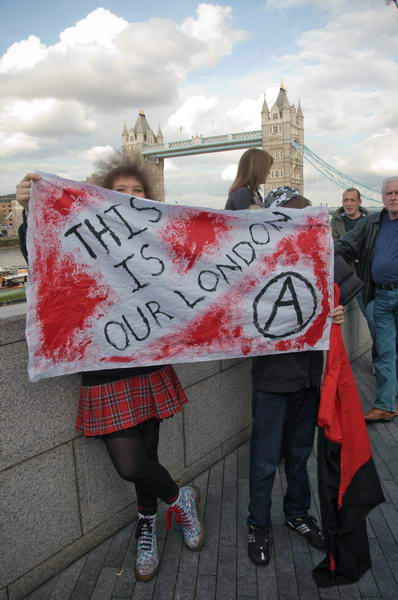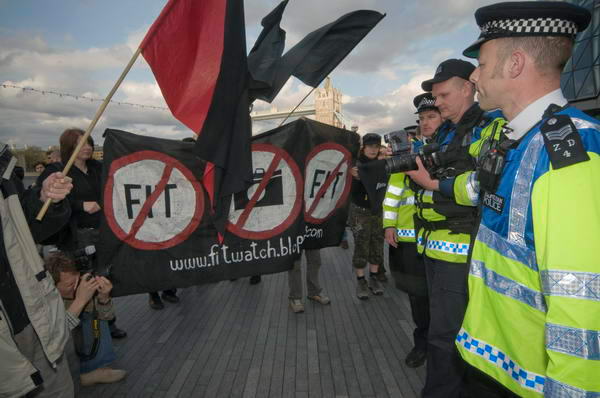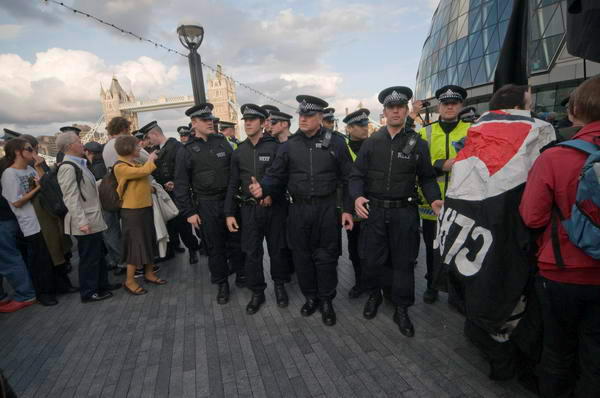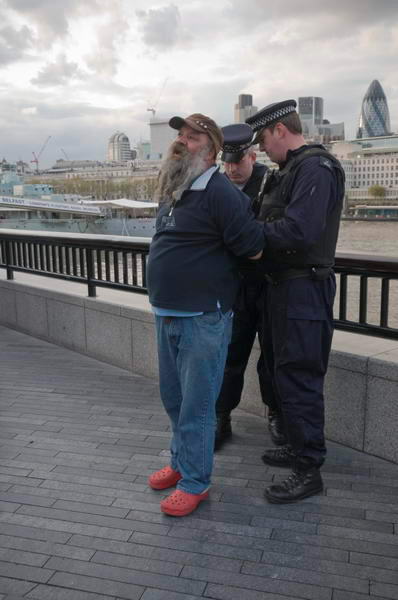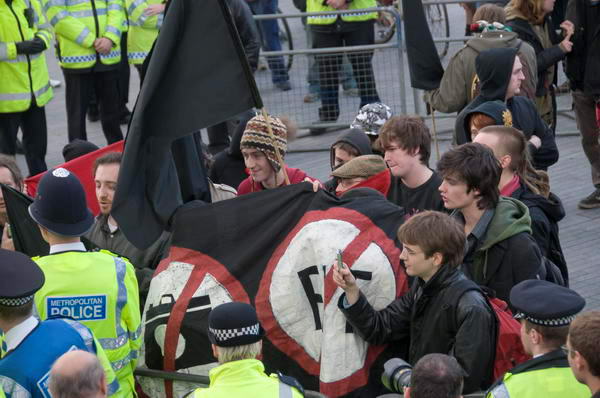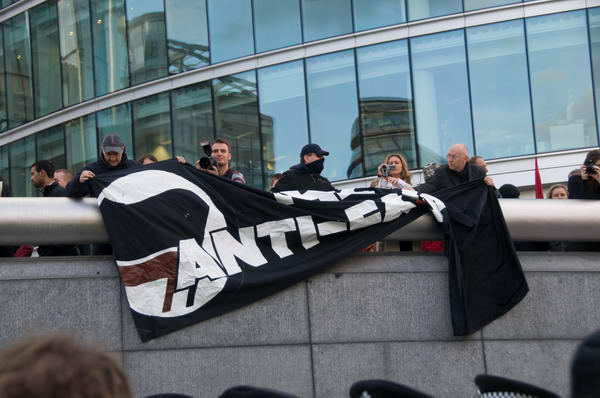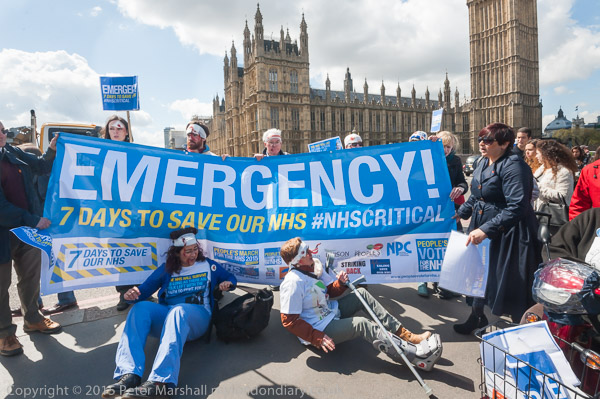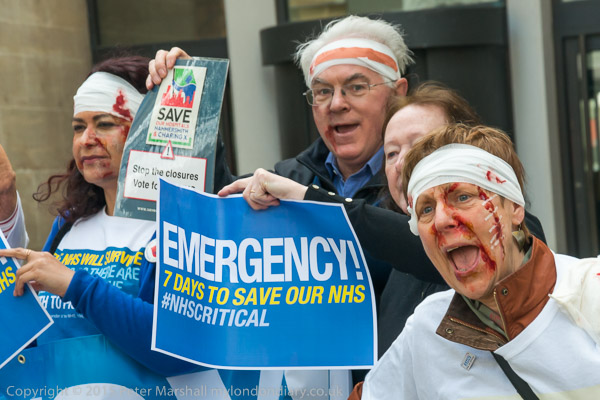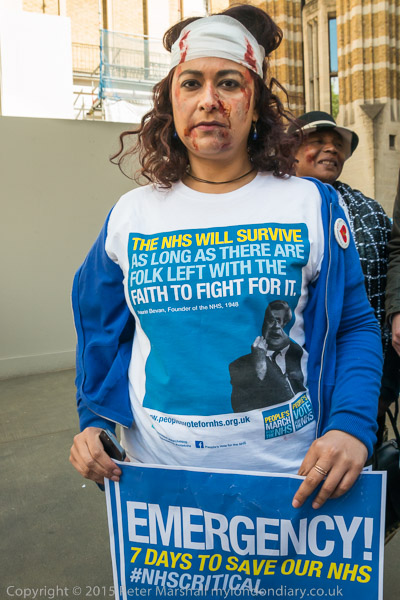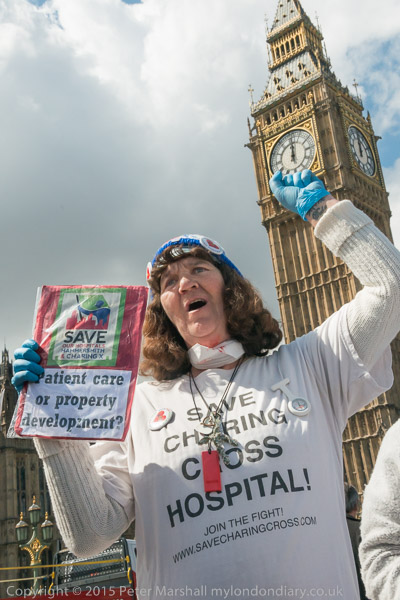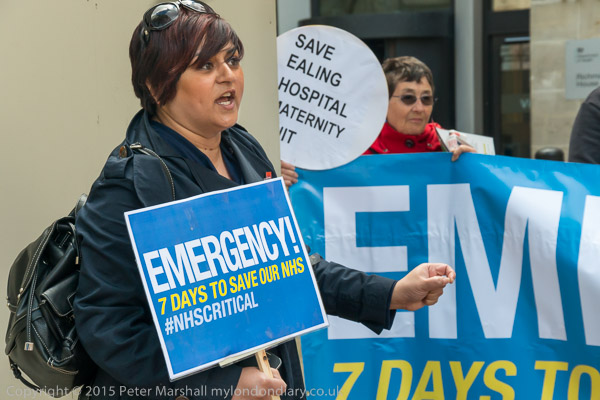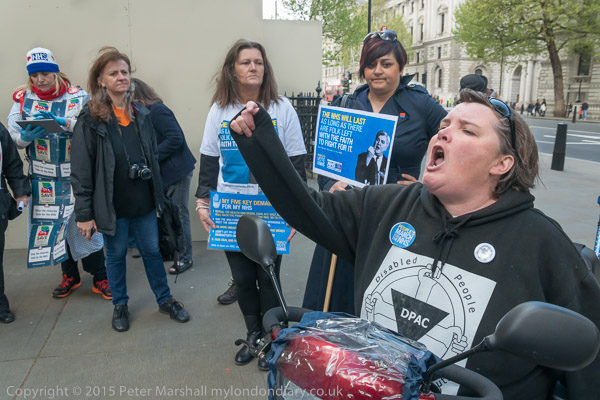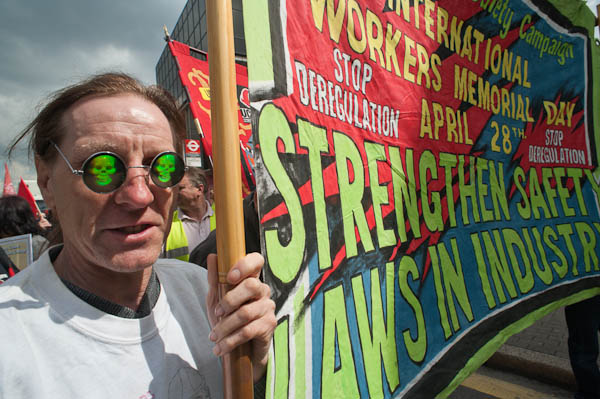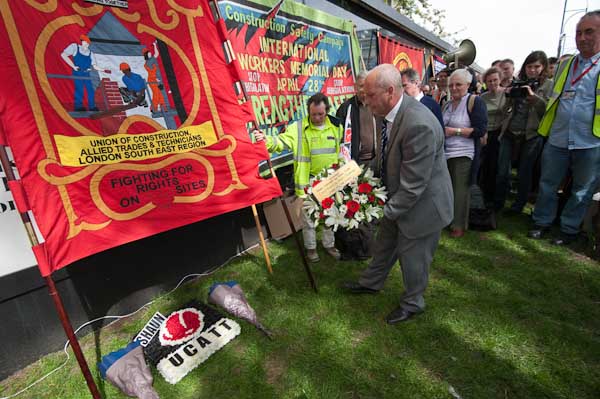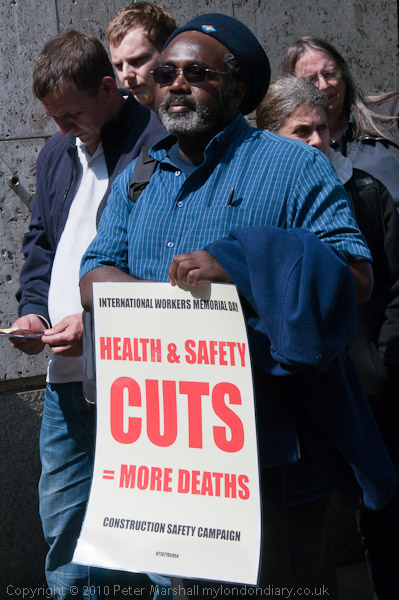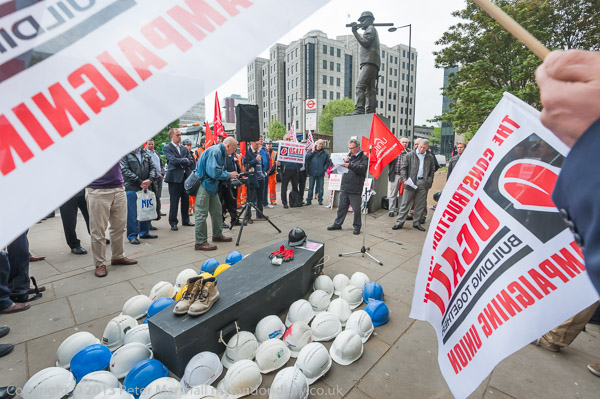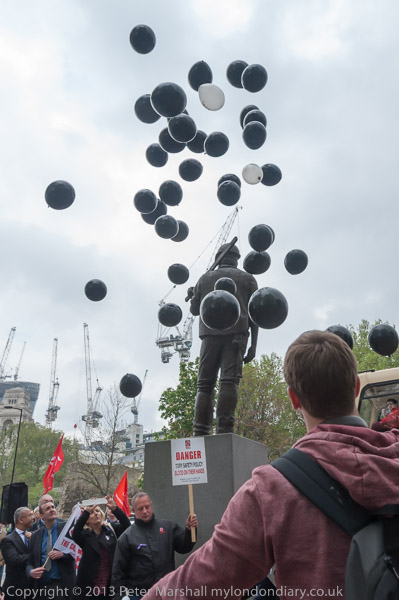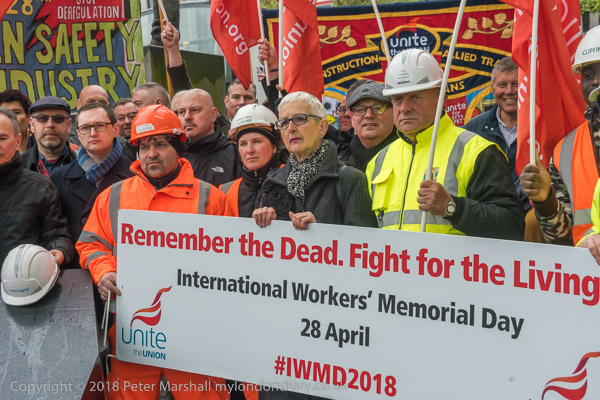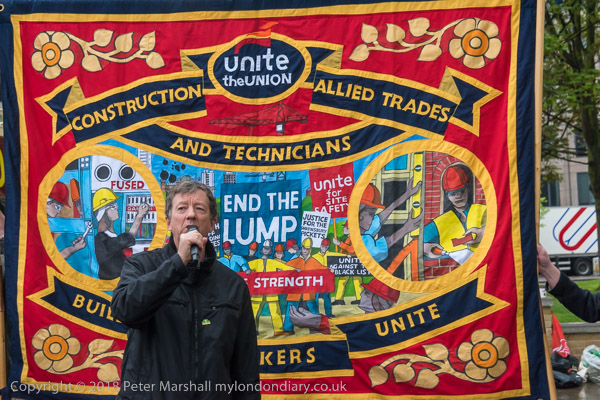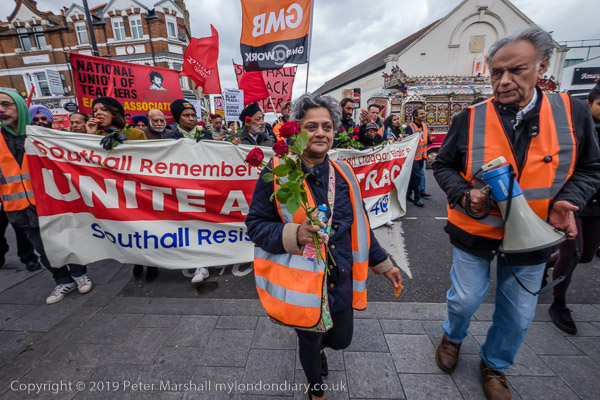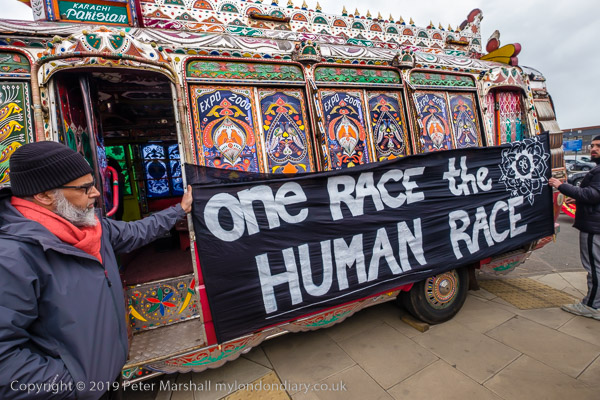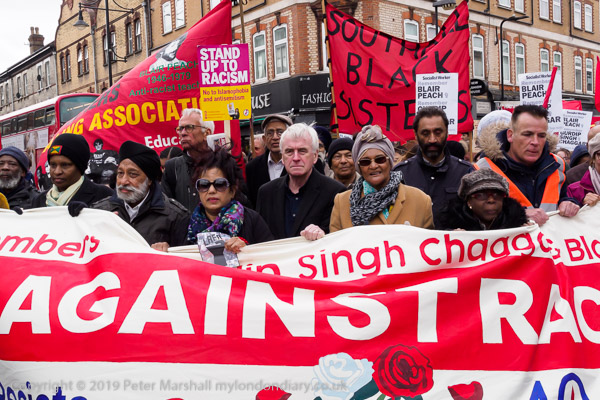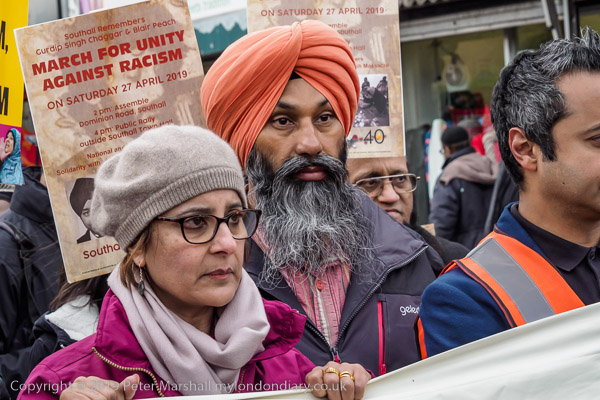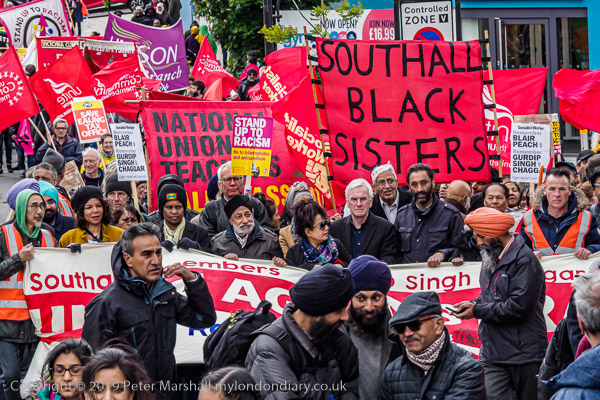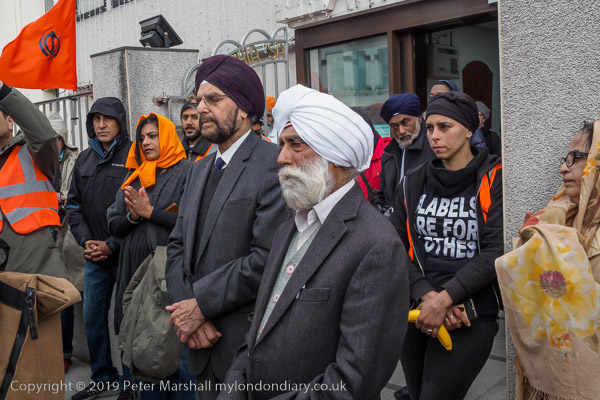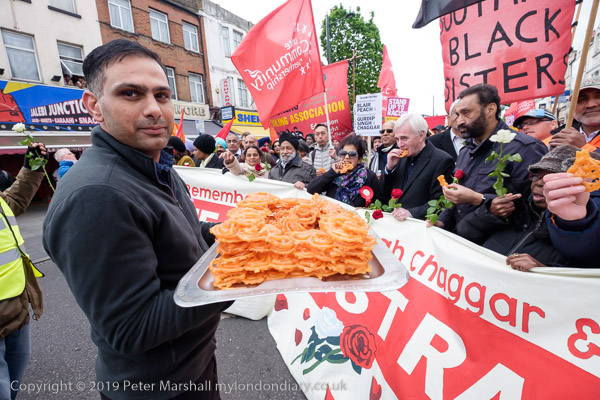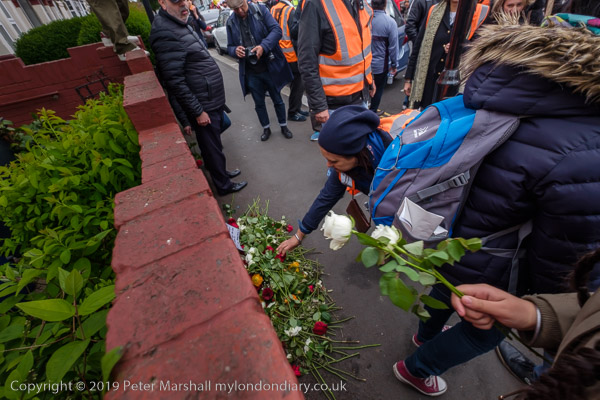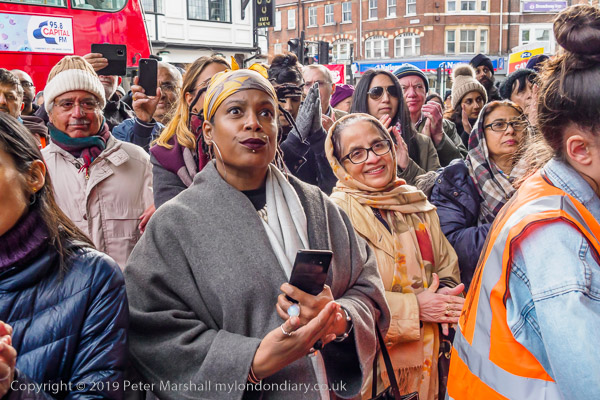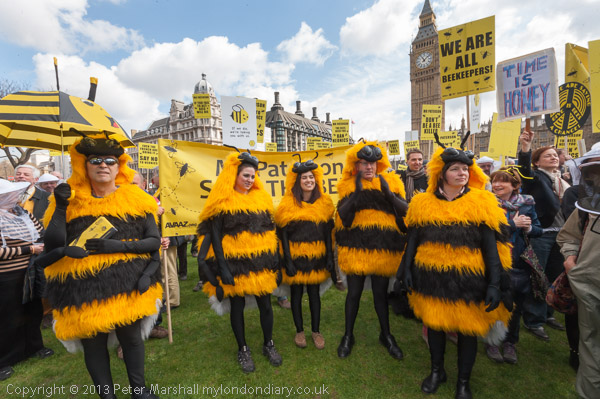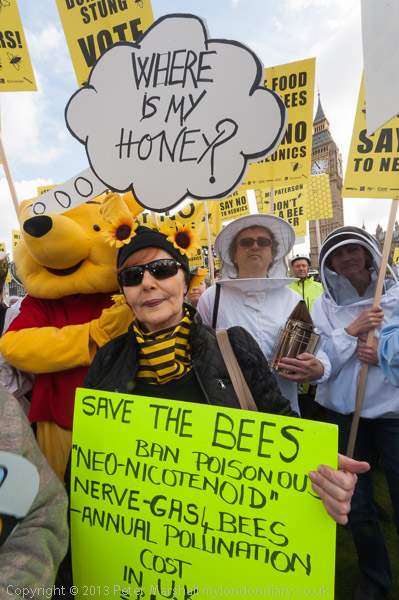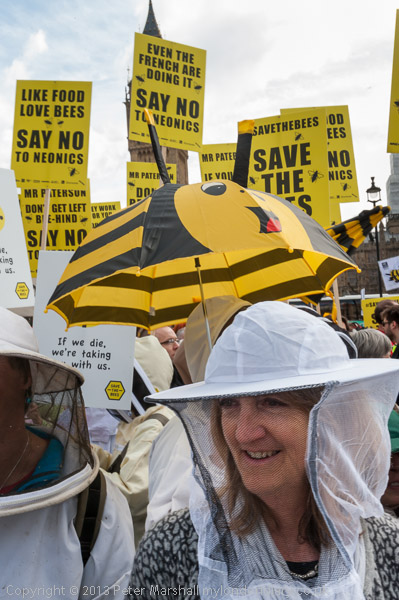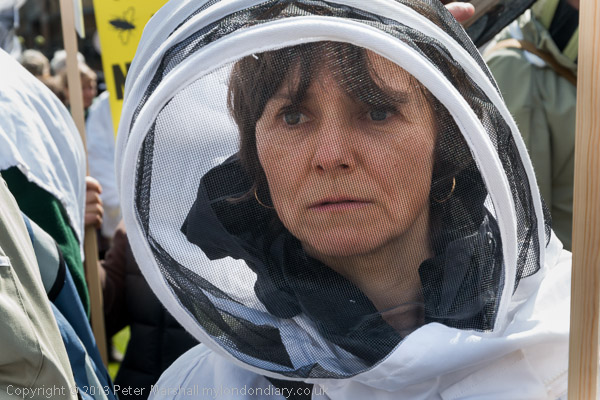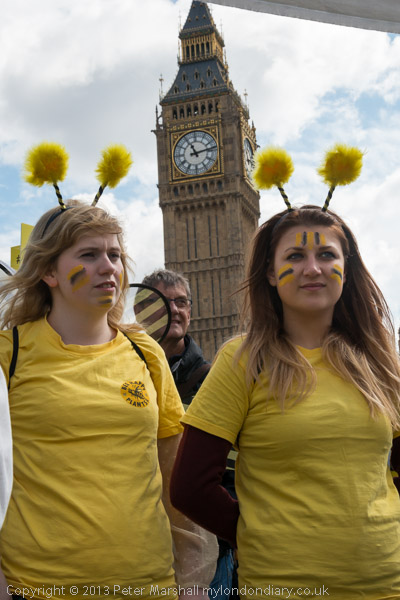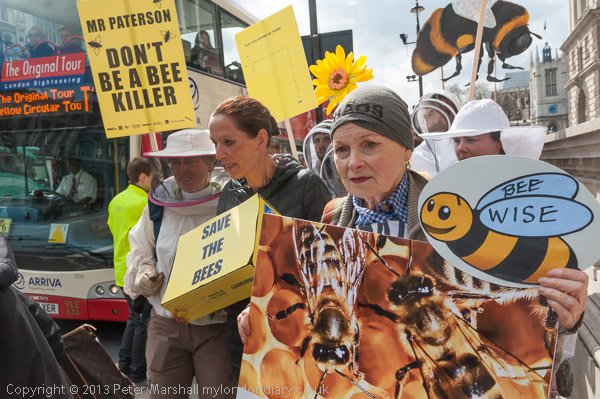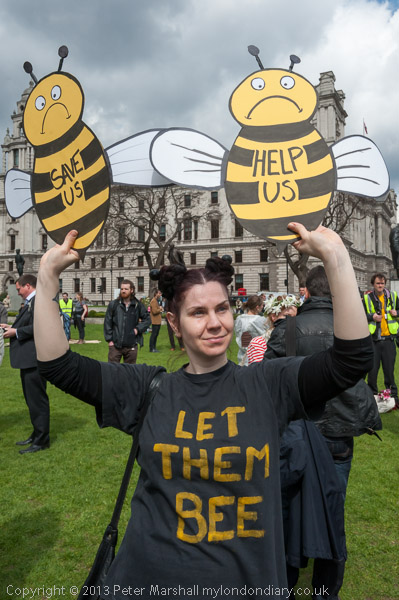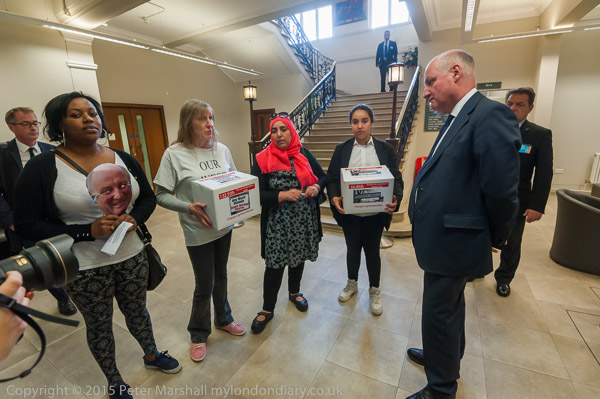
I photographed several protests on Wednesday 13th May 2015 before making my way to Barnet Town Hall where campaigners from Sweets Way and West Hendon estates had come to question councillors at a Town Hall meeting and hand over petitions with over 200,000 signatures to council leader Richard Cornelius.
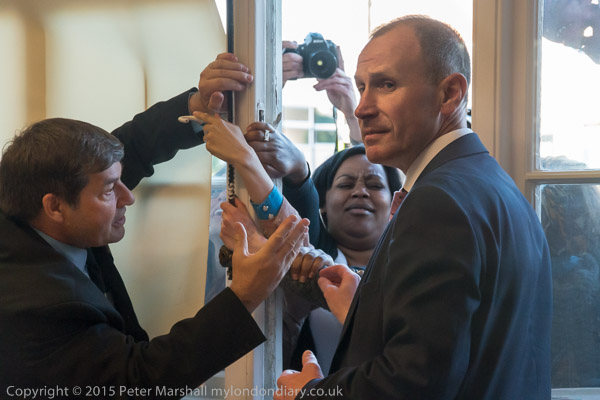
They held a loud protest outside the hall before a small group went inside to hand over the petition, and security on the door let me go in with them when I showed my press card, and I began to take pictures, along with another photographer. But the council press officer intervened, looked at my press card and firmly told me “No Photographs” and called on security to escort me and the other press photographer out of the building.
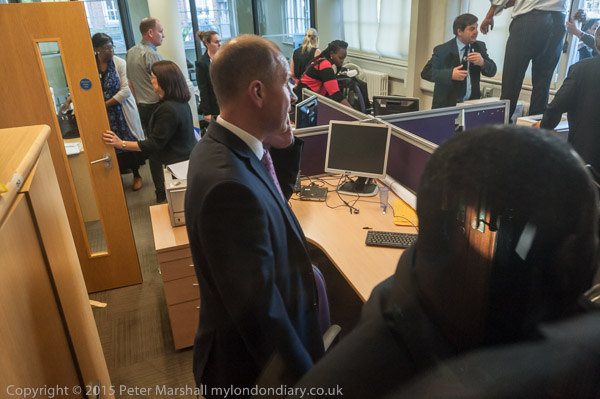
I protested but went with the security team who led me towards the door. They couldn’t take me out as the large crowd outside was trying hard to push its way inside to attend the meeting. From the lobby I could see that some were trying to climb in through a window with council staff blocking them and I took a few pictures – through a glass partition – until another council employee moved to block my view, holding up a coat in front of my lens.
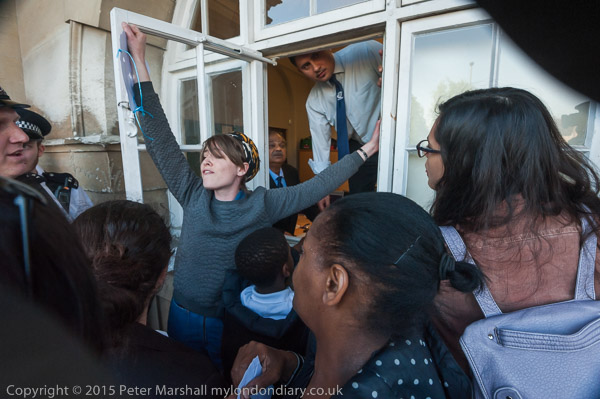
I wasn’t too upset, as in both cases I had managed to take pictures before I was stopped, but did feel that the council were acting in an unreasonable manner in trying to stop reporting of events in which there was a clear public interest about a public authority taking place in a public building. The security men who were following the order to escort me out were behaving reasonably and I think were unhappy at being asked to take me outside – which eventually they did. They and the police on duty had earlier let me inside when I showed my press card.
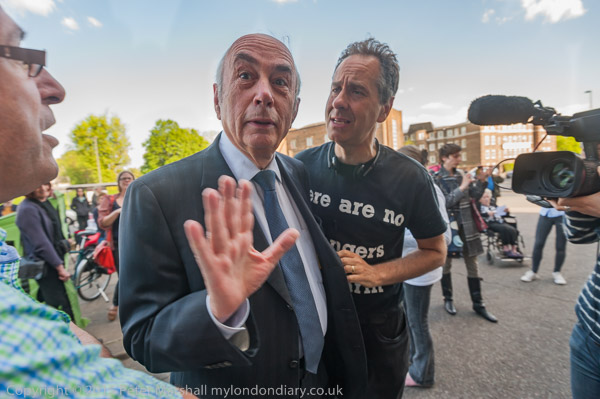
Then I was able to photograph the crowd outside trying to make their way in. Eventually things calmed down after some of them were told they would be admitted, but I was firmly told I could not come in as I had taken photographs earlier. I was actually pleased to leave as I was getting tired and hungry after a rather long day.
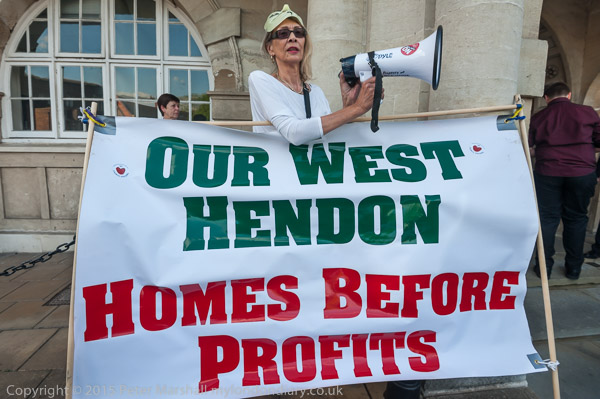
Local government here in the UK has become far less transparent, with decisions being taken by small cabals under ‘cabinet’ systems which even leave many councillors unaware of what is going on. Local newspapers have largely disappeared, their place taken by ‘local editions’ of nation-wide organisations which have few if any local staff – and who seldom attend or report on council meetings, relying instead on PR handouts.
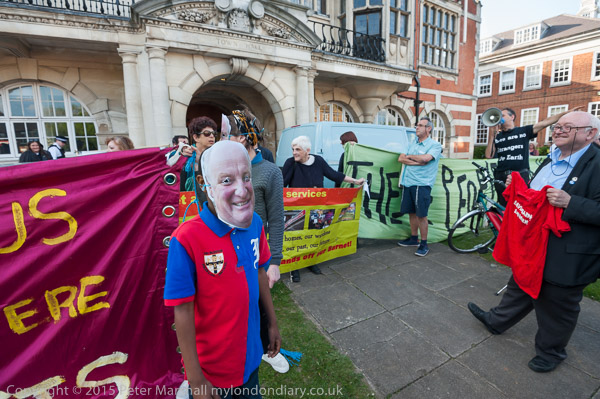
Local authorities have a long history of corruption, with various projects and deals which benefit the particular business interests of councillors and officers rather than simply the people they are supposed to serve. Of course what is good for the town should also be good for businesses in the town, and many councillors have been local businessmen – though of course council decisions should not give special favours to their businesses, as so often happened.
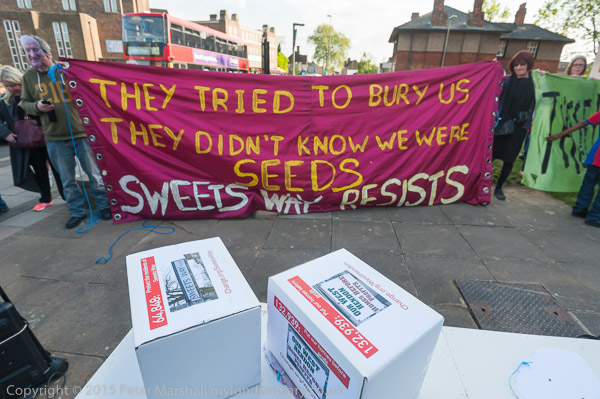
But decisions like those to demolish the West Hendon estate involve major property developers and seem to be being taken not about the local residents whose homes are being demolished but about huge profits for developers and some financial advantage for the councils, often with significant personal inducements for those councillors and officers concerned with making the decisions. The West Hendon council estate is being demolished because it is on an attractive site overlooking the Welsh Harp reservoir and new flats will be highly marketable – council and developers see social housing there as a wasted business opportunity.
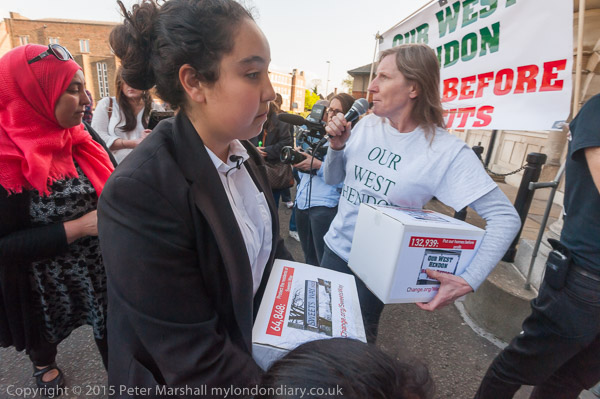
My treatment at Barnet was in itself of no real importance, but a symptom of the lack of transparency and a culture of secrecy that now pervades local government. If we are to have confidence in our councils we need a much greater openness.
Sweets Way & West Hendon at Barnet Council
All photographs on this and my other sites, unless otherwise stated, are taken by and copyright of Peter Marshall, and are available for reproduction or can be bought as prints.
